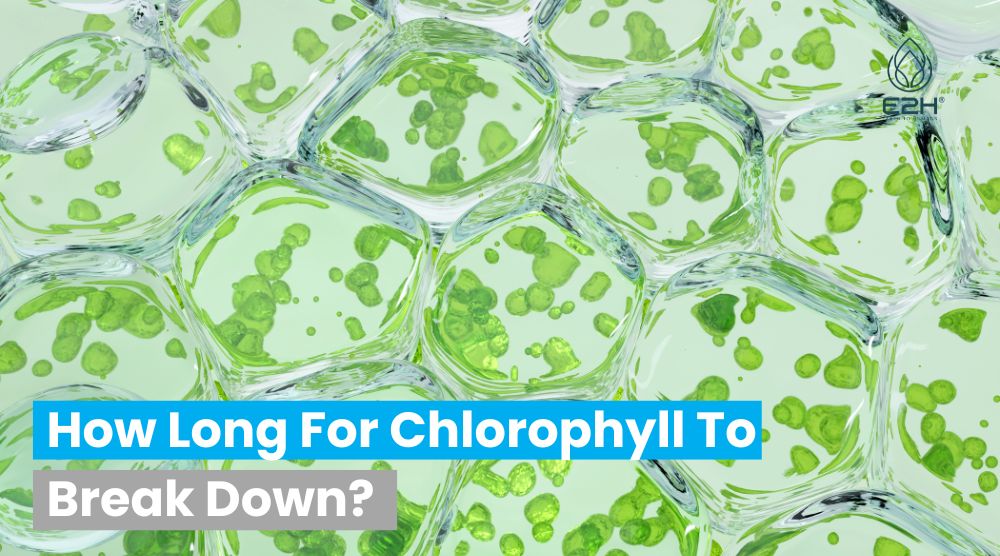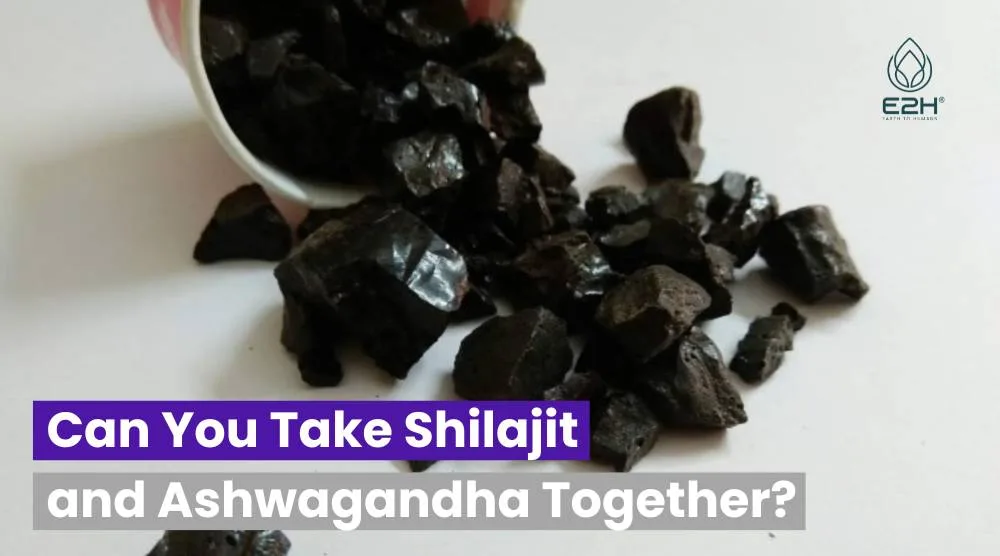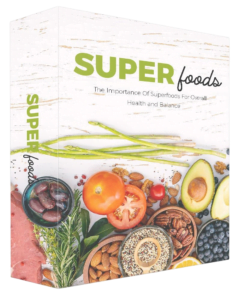Chlorophyll degradation can take anywhere from a few days to several weeks depending on factors such as temperature, light, pH, and oxygen.
What is Chlorophyll?
Chlorophyll is a green pigment that is found in the chloroplasts of plants and algae. It is responsible for absorbing light energy from the sun during photosynthesis, which is then used to convert carbon dioxide and water into glucose and oxygen. Chlorophyll is critical for plant survival as it allows them to produce their own food and release oxygen into the atmosphere. It also gives plants their characteristic green color, which is visible to the human eye.
How long for chlorophyll to break down?
Chlorophyll can break down at different rates depending on various factors such as temperature, light, and pH levels. In general, chlorophyll breakdown occurs naturally in aging plants, with the process being accelerated by environmental stresses such as cold temperatures, drought, or nutrient deficiencies. The breakdown of chlorophyll is also influenced by the activity of enzymes and the action of various chemicals such as abscisic acid.

The time it takes for chlorophyll to completely break down can vary, but it typically occurs over the course of several days to weeks. However, chlorophyll degradation can occur more rapidly in some situations, such as when fruits and vegetables are stored at high temperatures or when exposed to light. On the other hand, chlorophyll breakdown can be slowed or inhibited by storing plant materials in the dark or under certain conditions such as low oxygen levels. Overall, the rate of chlorophyll breakdown is highly dependent on environmental conditions and the specific plant species in question.
How do you break down chlorophyll?
Chlorophyll is a green pigment found in plants, algae, and cyanobacteria. It is responsible for the green color of leaves and other plant parts and is essential for the process of photosynthesis, which allows plants to convert light energy into chemical energy.
While chlorophyll is essential for plant growth and development, it can also be a nuisance for humans when it stains clothing or surfaces. Chlorophyll degradation is a natural process that can be influenced by several factors, including temperature, light, pH, and oxygen. In this article, we will explore the different methods of breaking down chlorophyll and removing chlorophyll stains.
Methods of Breaking Down Chlorophyll:
There are several methods of breaking down chlorophyll, including heat treatment, acid treatment, and enzymatic treatment.
Heat Treatment
Heat treatment involves heating or drying and curing the plant material to a high temperature with moisture to break down the chlorophyll. This method is commonly used in food processing to remove chlorophyll from green vegetables. However, high temperatures and moisture during the drying and curing process can also destroy other nutrients in the plant material, so this method should be used with caution.
Acid Treatment
Acid treatment involves treating the plant material with an acid, such as hydrochloric acid or sulfuric acid. This breaks down the chlorophyll into its component parts. Acid treatment is commonly used in laboratory settings to extract chlorophyll from plant material for analysis. However, this method can be dangerous if not done properly, as the acid can be corrosive and toxic.
Enzymatic Treatment
Enzymatic treatment involves using enzymes to break down chlorophyll. Enzymes are proteins that catalyze chemical reactions in living cells. There are several enzymes that are involved in chlorophyll degradation, including chlorophyllase, pheophytinase, and chlorophyllase a/b hydrolase. These enzymes break down chlorophyll into its component parts. Enzymatic treatment is a gentle and efficient method of breaking down chlorophyll that is commonly used in the food industry to extract chlorophyll from plant material for use as a food coloring.
Factors Affecting Chlorophyll Degradation:
Chlorophyll is a green pigment that is essential for photosynthesis, the process by which plants convert light energy into chemical energy. Chlorophyll is found in the chloroplasts of plant cells and is responsible for the green color of leaves, stems, and other plant tissues. However, chlorophyll degradation is a natural process that occurs over time, resulting in the loss of green color in plant tissues. This degradation can be influenced by several factors, including temperature, light, oxygen, pH, enzymes, and chemicals.
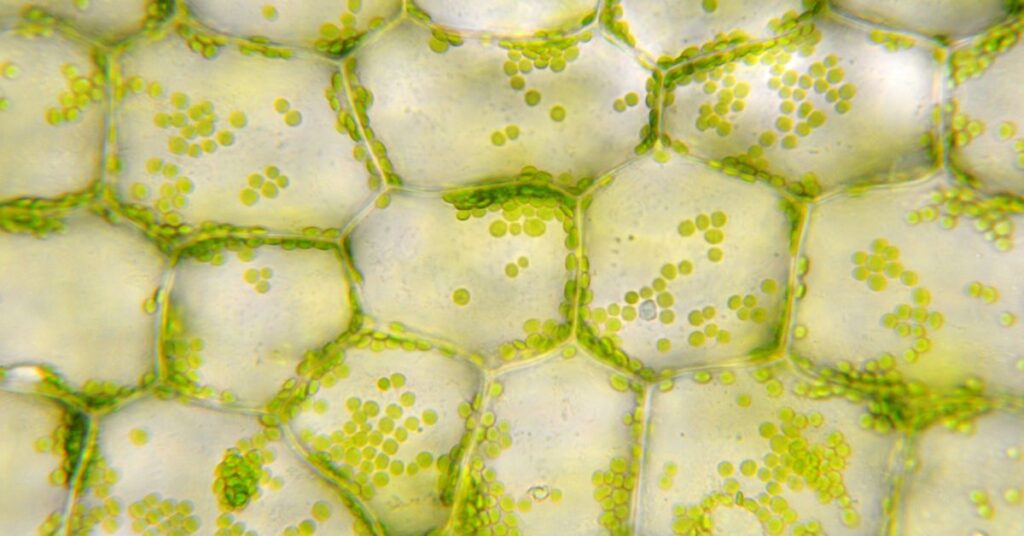
Temperature
Temperature is one of the most important factors that affect chlorophyll degradation. Higher temperatures can accelerate the breakdown of chlorophyll in plant tissues, leading to a loss of green color. This is why leaves may turn yellow or brown in hot, dry conditions. In addition, high temperatures can also lead to the production of reactive oxygen species, which can further damage plant tissues and accelerate chlorophyll degradation.
Light
Exposure to light can also affect chlorophyll degradation. In plants, chlorophyll is constantly being synthesized and broken down in response to changes in light conditions. However, exposure to excessive light can accelerate the breakdown of chlorophyll, leading to a loss of green color in plant tissues. This is why leaves on trees may change color in the fall as the amount of sunlight decreases.
Oxygen
The presence of oxygen can also speed up chlorophyll degradation. Oxygen is involved in several enzymatic reactions that break down chlorophyll in plant tissues. As a result, vegetables that are exposed to air, such as cut lettuce or spinach, may turn brown over time due to the breakdown of chlorophyll. This is why it is important to store fruits and vegetables in airtight containers to prevent the entry of oxygen.
pH
The pH of the environment can also affect chlorophyll degradation. For example, acidic conditions can lead to a loss of green color in vegetables like green beans or broccoli. This is because the breakdown of chlorophyll is catalyzed by enzymes, and the activity of these enzymes is influenced by the pH of the environment. In acidic conditions, the activity of these enzymes may be enhanced, leading to more rapid chlorophyll degradation.
Enzymes
Enzymes are involved in the natural breakdown of chlorophyll in plants. Changes in the activity of these enzymes can affect the rate of chlorophyll degradation. For example, enzymes involved in chlorophyll breakdown may be activated by changes in temperature, light, or pH. In addition, the activity of these enzymes may also be influenced by the presence of other compounds, such as antioxidants or other plant pigments.
Chemicals
Exposure to certain chemicals, such as herbicides or pesticides, can also accelerate chlorophyll degradation. This is because these chemicals can damage plant tissues and interfere with the enzymatic reactions that break down chlorophyll. In addition, exposure to certain chemicals can also lead to the production of reactive oxygen species, which can further damage plant tissues and accelerate chlorophyll degradation.
Understanding the factors that influence chlorophyll degradation is important for a variety of reasons. For example, in agriculture, growers may use this knowledge to develop strategies for preserving the color and quality of fruits and vegetables. This may involve optimizing storage conditions, such as temperature and humidity, or the use of chemical treatments to slow down chlorophyll degradation.
Similarly, in the food industry, manufacturers may use antioxidants or other additives to protect the color and quality of food products that contain chlorophyll. Overall, understanding the factors that influence chlorophyll degradation can help to ensure that plant-based products remain fresh, vibrant, and nutritious for as long as possible.
Removing Chlorophyll Stains
Chlorophyll stains can be difficult to remove, especially if they have set in. However, there are several methods that can be used to remove chlorophyll stains from clothing, surfaces, and other materials.
- Bleach: Bleach is a common method of removing chlorophyll stains. Chlorine bleach can be effective, but it should be used with caution as it can damage some fabrics and surfaces. Oxygen bleach is a safer alternative that can be used on most fabrics.
- Vinegar: Vinegar is another method of removing chlorophyll stains. It can be applied directly to the stain or added to the wash cycle. However, it may not be effective on stubborn stains.
- Rubbing Alcohol: Rub bing alcohol can also be used to remove chlorophyll stains. It should be applied directly to the stain and then blotted with a clean cloth. This method may not be effective on all fabrics.
- Hydrogen Peroxide: Hydrogen peroxide is a strong oxidizing agent that can be effective at removing chlorophyll stains. It should be applied directly to the stain and left to soak for a few minutes before washing.
- Commercial Stain Removers: There are also commercial stain removers available that can be effective at removing chlorophyll stains. These products can be found at most grocery stores and should be used according to the instructions on the label.
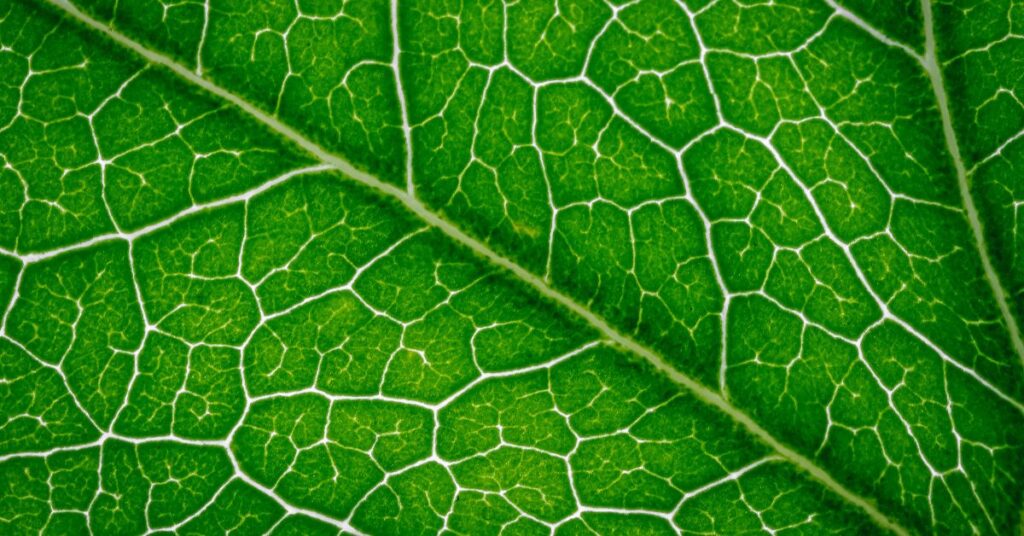
Methods of Chlorophyll Removal
Chlorophyll is a green pigment found in plants that is responsible for the green color of leaves, stems, and other plant tissues. However, sometimes it may be desirable to remove chlorophyll from plant material, for example, in the food industry, where the presence of chlorophyll can negatively impact the color and appearance of food products. There are several methods for removing chlorophyll from plant material, including physical, chemical, and biological methods.
Physical Methods
Physical methods involve the use of mechanical force or physical agents to remove chlorophyll from plant material. The most common physical methods include grinding, pressing, and filtration.
- Grinding: Grinding plant material can help to break open the cells and release the chlorophyll. This method is commonly used in the production of plant extracts and powders.
- Pressing: Pressing plant material can help to separate the liquid portion, which contains chlorophyll, from the solid portion. This method is commonly used in the production of juices and oils.
- Filtration: Filtration is a method that uses a physical barrier to separate chlorophyll from plant material. This method is commonly used in the production of herbal teas and plant extracts.
Chemical Methods
Chemical methods involve the use of chemicals to remove chlorophyll from plant material. The most common chemical methods include solvent extraction and acid hydrolysis.
- Solvent Extraction: Solvent extraction involves the use of a solvent, such as ethanol or acetone, to dissolve chlorophyll from plant material. This method is commonly used in the production of plant extracts and concentrates.
- Acid Hydrolysis: Acid hydrolysis involves the use of acid to break down chlorophyll into its individual components. This method is commonly used in the production of chlorophyll-free extracts and pigments.
Biological Methods
Biological methods involve the use of enzymes or microorganisms to remove chlorophyll from plant material. The most common biological methods include enzymatic hydrolysis and fermentation.
- Enzymatic Hydrolysis: Enzymatic hydrolysis involves the use of enzymes, such as chlorophyllase or esterase, to break down chlorophyll into its individual components. This method is commonly used in the production of chlorophyll-free extracts and pigments.
- Fermentation: Fermentation involves the use of microorganisms, such as bacteria or fungi, to break down chlorophyll into its individual components. This method is commonly used in the production of fermented foods, such as tempeh and miso.
Does chlorophyll break down in the dark?
The short answer is yes, chlorophyll can break down in the dark. While light is a major factor that affects chlorophyll degradation, it is not the only one. In fact, several studies have shown that chlorophyll degradation can occur even in the absence of light.
One of the main mechanisms of chlorophyll degradation in the dark is the action of enzymes called chlorophyllases. Chlorophyllases are enzymes that catalyze the hydrolysis of chlorophyll, breaking it down into its components. This process can occur in the presence or absence of light.
Another mechanism of chlorophyll degradation in the dark is the oxidation of chlorophyll. This process involves the formation of free radicals that react with chlorophyll, causing it to break down. This process is accelerated in the presence of oxygen, which is why it is often observed in the air-drying of plant materials.
The rate of chlorophyll degradation in the dark can vary depending on several factors, including the type of plant material, the storage conditions, and the presence of other compounds that can affect chlorophyll stability. For example, some studies have shown that the rate of chlorophyll degradation in the dark is slower in fresh plant material compared to stored material. This is because fresh plant material contains high levels of antioxidants that can help to protect chlorophyll from degradation.
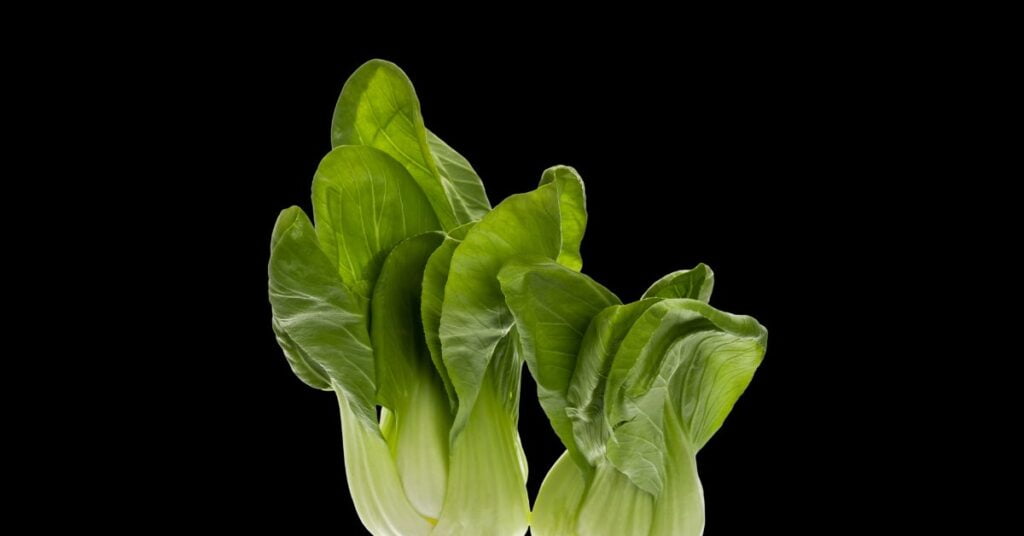
On the other hand, the presence of certain compounds can accelerate chlorophyll degradation in the dark. For example, the presence of acids, such as acetic acid, can increase the rate of chlorophyll degradation by promoting the hydrolysis of chlorophyll.
So, what are the practical implications of chlorophyll degradation in the dark? One of the main implications is the loss of green color in plant material. This can be a concern in the food industry, where the appearance of food products is an important factor for consumer acceptance. For example, vegetables and fruits that are stored in the dark for extended periods may lose their green color and appear yellow or brown.
In addition, the breakdown of chlorophyll can also affect the nutritional properties of plant material. Chlorophyll is an important source of magnesium, which is essential for many biochemical reactions in plants and animals. The breakdown of chlorophyll can lead to a loss of magnesium, which can affect the nutritional value of plant material.
To prevent chlorophyll degradation in the dark, it is important to store plant material under appropriate conditions. This may include storing the material in a cool, dry, and dark place, as well as minimizing exposure to air and other factors that can accelerate chlorophyll degradation. In addition, the use of antioxidants and other compounds that can help to protect chlorophyll from degradation may also be beneficial.
Is Chlorophyll breakdown in higher plants?
Yes, chlorophyll breakdown is a natural process of aging that occurs in higher plants, just as it does in all photosynthetic organisms. In fact, the breakdown and aging of chlorophyll is an important aspect of plant senescence, which is the process by which plants age and eventually die.
During plant senescence, chlorophyll is broken down into a variety of compounds that are collectively known as chlorophyll catabolites. These catabolites can have a range of different structures, depending on the plant species and the stage of senescence.
One of the most common types of sugars in chlorophyll catabolites is called pheophorbide a. This compound is produced when chlorophyll is broken down by enzymes called chlorophyllases. Pheophorbide a is then further modified by other enzymes to produce a range of sugars and other compounds, including red and yellow pigments that are responsible for the autumnal leaf colors of deciduous trees.
The breakdown of chlorophyll during leaf senescence is regulated by a complex network of genes and proteins. Some of these genes and proteins are involved in the production of enzymes that break down chlorophyll, while others are involved in the regulation of chlorophyll breakdown and the transport of chlorophyll catabolites to different parts of the plant.
While chlorophyll breakdown is a natural process that occurs in all higher plants, the rate of breakdown can vary depending on a variety of factors. One of the most important factors is the age of the plant. As plants age, the rate of chlorophyll breakdown increases, leading to the production of increasing amounts of chlorophyll catabolites.
Another important factor that can affect the rate of chlorophyll breakdown is environmental stress. Plants that are exposed to stressors such as high temperatures, drought, or nutrient deficiency may undergo accelerated senescence, leading to more rapid chlorophyll breakdown.
Interestingly, some plants have evolved mechanisms to slow down or delay the breakdown of chlorophyll during senescence. For example, some species of plants produce compounds known as stay-green pigments, which can help to slow down the breakdown of chlorophyll and delay drying process of senescence.
The breakdown of chlorophyll in higher plants has several important implications for agriculture and horticulture. For example, the timing of senescence and the rate of chlorophyll breakdown can affect the yield and quality of crops. In some cases, delaying senescence or slowing down the breakdown of chlorophyll can lead to higher yields and better quality produce.
On the other hand, in some cases, it may be desirable to accelerate chlorophyll breakdown in order to produce specific colors or flavors in fruits and vegetables. For example, the production of red and yellow pigments during the breakdown of chlorophyll can be used to enhance the taste and visual appeal of certain fruits and vegetables.
What triggers chlorophyll to break down?
Chlorophyll, the green pigment responsible for photosynthesis in plants, breaks down naturally over time as part of the plant’s life cycle. However, there are several factors that can trigger or accelerate chlorophyll breakdown, including environmental factors, genetic factors, and harvesting practices.
Environmental Factors
Environmental stressors, such as high temperatures, drought, and nutrient deficiency, can accelerate chlorophyll breakdown in plants. This is because stress can lead to the production of reactive oxygen species (ROS) in plant cells, which can damage chlorophyll molecules and trigger their breakdown. Exposure to light is also a major factor in chlorophyll breakdown, as light can promote the production of ROS and trigger the activity of enzymes that break down chlorophyll.
Genetic Factors
Genetic factors can also influence the rate of chlorophyll breakdown in plants. Some plant species are more resistant to stress and have a slower rate of chlorophyll breakdown than others. Similarly, certain genes and proteins have been identified that can regulate the rate of chlorophyll breakdown in plants. For example, mutations in certain genes can cause plants to undergo premature senescence and accelerate the breakdown of chlorophyll.
Harvesting Practices
The way in which crops are harvested can also affect the rate of chlorophyll breakdown. For example, if crops are harvested during the hottest part of the day, when temperatures are high and the sun is strongest, this can accelerate chlorophyll breakdown and reduce the quality and shelf-life of the harvested produce. Similarly, if crops are exposed to light for extended periods of time after harvesting, this can also accelerate chlorophyll breakdown and reduce the quality of the produce.
In addition to these factors, the method of storage and processing can also have an impact on chlorophyll breakdown. For example, exposure to heat, oxygen, and certain chemicals can all accelerate chlorophyll breakdown in plant material. On the other hand, storage in cool, dark conditions can slow down the rate of chlorophyll breakdown and help to preserve the quality and nutritional value of the plant material.
Understanding the factors that trigger chlorophyll breakdown is important in a variety of fields, from agriculture to food science. For example, in agriculture, understanding the environmental and genetic factors that affect chlorophyll breakdown can help farmers to optimize their crop yields and minimize losses due to premature senescence. Similarly, in food science, understanding the factors that affect chlorophyll breakdown can help to develop more effective methods of processing, storage, and preservation for plant-based foods.
Why does chlorophyll need to be removed?
While chlorophyll is an essential component of plant growth and photosynthesis, there are several reasons why it may need to be removed from plant material. These reasons vary depending on the context, but some common reasons include:
- Cosmetic Purposes: Chlorophyll can give plant material a green, earthy appearance that is not always desired. In the food industry, for example, chlorophyll may be removed from certain products to improve their appearance and make them more visually appealing to consumers.
- Nutritional Considerations: While chlorophyll is an important source of nutrients for plants, it may not always be desirable or beneficial for human consumption. In some cases, chlorophyll may interfere with the absorption of other nutrients or cause digestive issues in sensitive individuals. As such, it may be necessary to remove chlorophyll from certain plant-based foods or supplements in order to improve their nutritional quality and digestibility.
- Sensory Considerations: In some cases, chlorophyll can contribute to off-flavors or odors in plant material, particularly when it is beginning to break down or undergo senescence. Removing chlorophyll can help to mitigate these issues and improve the overall quality and sensory characteristics of the plant material.
- Analytical Purposes: Chlorophyll can interfere with certain analytical methods used to measure other compounds in plant material, such as antioxidants or phytochemicals. By removing chlorophyll, it is possible to improve the accuracy and reliability of these analytical methods and obtain more accurate data on the composition of the plant material.
- Industrial Purposes: Chlorophyll can also interfere with certain industrial processes, such as the production of biofuels or pharmaceuticals. In these contexts, chlorophyll may need to be removed in order to optimize the efficiency and quality of the final product.

where is chlorophyll located in a plant?
Chlorophyll is a pigment that plays a crucial role in photosynthesis, the process by which plants convert light energy into chemical energy to fuel their growth and survival. Chlorophyll is located in specialized organelles called chloroplasts, which are present in the cells of green plant tissues, including leaves, stems, and fruits.
In leaves, chlorophyll is located in the thylakoid membranes of the chloroplasts, which are stacked in structures called grana. The chlorophyll molecules are arranged in such a way that they capture and absorb light energy from the sun, which is then used to drive the photosynthetic reactions that produce carbohydrates and oxygen. In stems fan leaves, chlorophyll is also present in the chloroplasts of the stem and leaf, the green tissue of the leaf and whole plant, which allows for photosynthesis to occur and energy to be stored for the whole plant.
In fruits, chlorophyll is located in the chloroplasts of the green parts of the fruit, such as the skin. As the fruit ripens, chlorophyll is broken down and other pigments become more visible, giving the fruit its full colour and characteristic color green taste and smell. Overall, chlorophyll is essential for the growth and survival of plants and is located in the specialized organelles called chloroplasts, which are present in the green tissues of the plant.
What does chlorophyll contain?
Chlorophyll is a green pigment found in plants and algae that is essential for photosynthesis, the process by which these organisms convert light energy into chemical energy. The molecular structure of chlorophyll contains a complex organic ring structure called a porphyrin, which is also found in hemoglobin, the protein that carries oxygen in our blood. The porphyrin ring of chlorophyll contains a central magnesium ion, which is coordinated by a nitrogen atom in each of the four pyrrole groups that make up the ring. This central magnesium ion is crucial for the function of chlorophyll, as it allows the molecule to capture and absorb light energy from the sun.
In addition to the porphyrin ring, chlorophyll also contains a long hydrophobic tail that anchors the molecule in the thylakoid membrane of the chloroplasts in plant cells. This tail helps to keep the chlorophyll molecules in place and oriented in the correct direction to maximize their absorption of light energy. Chlorophyll is also surrounded by a protein called a chlorophyll-binding protein, which helps to protect the molecule from damage and ensures that it is positioned correctly within the thylakoid membrane.
The exact composition of chlorophyll can vary slightly depending on the specific type of plant or algae in which it is found. There are several different types of chlorophyll, including chlorophyll a, which is the most common type found in plants, and chlorophyll b, which is found in higher plants and algae. Some algae also contain different types of chlorophyll, such as chlorophyll c and d. Overall, chlorophyll contains a complex porphyrin ring structure with a central magnesium ion, as well as a hydrophobic tail and a chlorophyll-binding protein. The precise composition of chlorophyll can vary depending on the organism in which it is found.
What are chlorophyll catabolites, and where are they found in plants, specifically in leaves and fruits?
Chlorophyll catabolites (CCs) are breakdown products of chlorophyll that are formed during the natural degradation of chlorophyll in plant tissues. These catabolites are found in a variety of plant tissues, including leaves, fruits, and flowers, and are important for the recycling of chlorophyll and the maintenance of plant health.
Chlorophyll catabolites are formed through a series of enzymatic reactions that break down the complex chlorophyll molecule into smaller, more soluble fragments. The first step in this process is the removal of the magnesium ion from the chlorophyll molecule, which converts it into a chlorophyllide molecule. This process is catalyzed by the enzyme chlorophyllase, which is present in most plant tissues.
Once the magnesium ion has been removed, the chlorophyllide molecule can be further modified by a series of enzymes to form various types of chlorophyll catabolites. These catabolites can vary in structure depending on the specific plant species and tissue type, but typically contain a smaller, modified porphyrin ring structure and a variety of side chains.

In leaves, chlorophyll catabolites are primarily found in the senescent or dying cells of the leaf, where they play an important role in the recycling of nutrients and the maintenance of plant health. During leaf senescence, chlorophyll is broken down and its components are transported to other parts of the plant, where they can be used for energy or stored for future use.
In fruits, chlorophyll catabolites are found in the tissues surrounding the seeds and play a role in seed development and ripening. Studies have shown that CCs are involved in regulating the levels of plant hormones such as auxin and ethylene, which are important for fruit development and ripening.
Recent research has also suggested that chlorophyll catabolites may have potential as natural antioxidants and anti-inflammatory agents. Some studies have shown that certain CCs have potent antioxidant activity and may be effective in protecting cells from oxidative stress and damage.
Evolutionary aspects of chlorophyll breakdown
Chlorophyll is a fundamental pigment in photosynthesis, the process by which plants and some other organisms convert sunlight into chemical energy. As such, the ability to synthesize and use chlorophyll is a key adaptation that has evolved in many different species and groups of organisms. However, chlorophyll is a relatively unstable molecule, and its breakdown products can be toxic to the organism if not properly disposed of. As a result, the evolution of mechanisms for chlorophyll breakdown has been an important aspect of the evolution of photosynthetic organisms.
The breakdown of chlorophyll is a highly regulated process that involves a complex series of enzymatic reactions. In most organisms, chlorophyll is broken down into a number of different catabolites, which are more soluble and less toxic than the original pigment. These catabolites can then be further degraded and used as a source of nutrients or energy for the organism.
The evolution of mechanisms for chlorophyll breakdown has been driven by a number of factors, including the need to efficiently recycle nutrients, the need to prevent the accumulation of toxic breakdown products, and the need to optimize photosynthetic performance in different environments.
One of the key drivers of the evolution of chlorophyll breakdown mechanisms has been the need to efficiently recycle nutrients. Chlorophyll is a highly complex molecule that contains a large number of different elements, including magnesium, nitrogen, and carbon. As such, the breakdown of chlorophyll represents a valuable source of nutrients that can be recycled by the organism. In many cases, the breakdown products of chlorophyll are transported to other parts of the organism where they can be used for other metabolic processes.
Another important factor driving the evolution of chlorophyll breakdown mechanisms is the need to prevent the accumulation of toxic breakdown products. Chlorophyll catabolites can be toxic to the organism if they accumulate to high levels. As a result, organisms that rely on chlorophyll for photosynthesis have evolved sophisticated mechanisms for disposing of these products and preventing their accumulation. For example, in some organisms, the catabolites are transported to vacuoles, specialized organelles that can store and isolate potentially toxic substances.

The evolution of chlorophyll breakdown mechanisms has also been influenced by the need to optimize photosynthetic performance in different environments. Chlorophyll breakdown can be influenced by a variety of environmental factors, including light intensity, temperature, and nutrient availability. As such, organisms that inhabit different environments may require different mechanisms for chlorophyll breakdown in order to maintain optimal photosynthetic performance.
One example of the influence of environmental factors on chlorophyll breakdown can be seen in plants that live in aquatic environments. In these plants, chlorophyll breakdown is often inhibited by the high levels of dissolved organic matter in the water. As a result, these plants have evolved mechanisms for transporting the breakdown products of chlorophyll back into the leaves, where they can be recycled.
The evolution of chlorophyll breakdown mechanisms has also been influenced by the evolution of other metabolic pathways. For example, the evolution of the carotenoid biosynthetic pathway has been linked to the evolution of chlorophyll breakdown mechanisms in some groups of organisms. Carotenoids are pigments that are closely related to chlorophyll, and are synthesized by many of the same enzymes. In some organisms, the carotenoid biosynthetic pathway has been co-opted to synthesize some of the enzymes involved in chlorophyll breakdown.
What is chlorophyll comprised of?
Chlorophyll is a green pigment present in plants, algae, and some bacteria that is essential for the process of photosynthesis. It is responsible for capturing light energy and converting it into chemical energy, which is used to synthesize organic compounds necessary for plant growth and survival. The chemical composition of chlorophyll is complex and comprises several components that contribute to its overall structure and function.
Chlorophyll is a porphyrin pigment consisting of a tetrapyrrole ring system. The ring system is composed of four pyrrole rings linked by methine bridges, and each pyrrole ring is associated with a nitrogen atom. In chlorophyll, the tetrapyrrole ring is linked to a long hydrophobic side chain, which is responsible for the solubility of chlorophyll in lipid membranes. This side chain is also responsible for anchoring the pigment to the photosynthetic membrane.
The central metal ion in chlorophyll is magnesium, which is held in place by four nitrogen atoms from the pyrrole rings. This magnesium ion is crucial for the ability of chlorophyll to absorb light energy and transfer it to other molecules in the photosynthetic system. The magnesium ion is also involved in the redox reactions that occur during photosynthesis.
There are several types of chlorophyll that are found in different organisms, with the difference between the most common types being chlorophyll a and chlorophyll b. Chlorophyll a is found in all photosynthetic organisms, while chlorophyll b is found only in plants and green algae. These two types of chlorophyll differ in their side chains, which result in differences in their absorption spectra.
There are other types of chlorophyll found in certain organisms. For example, chlorophyll c is found in certain types of algae, while chlorophyll d is found in cyanobacteria. These different types of chlorophyll allow organisms to absorb light energy from different parts of the spectrum and utilize it for photosynthesis.
Chlorophyll is a complex pigment with a tetrapyrrole ring system linked to a long hydrophobic side chain. The central metal ion in chlorophyll is magnesium, which is held in place by four nitrogen atoms from the pyrrole rings. Chlorophyll plays a crucial role in the process of photosynthesis by capturing light energy and converting it into chemical energy. Different organisms have different types of chlorophyll that allow them to absorb light energy from different parts of the spectrum.
Why did chlorophyll evolve to be green as opposed to black, which would absorb more energy?
Chlorophyll is the pigment responsible for capturing light energy in plants and converting it into chemical energy through the process of photosynthesis. It is a complex molecule composed of a porphyrin ring (similar to that found in hemoglobin) and a long hydrophobic tail. Chlorophyll is green in color, which makes it ideal for capturing light energy in the visible spectrum. However, this raises the question of why chlorophyll evolved to be green instead of black, which would absorb more energy.
The answer to this question lies in the tradeoff between absorbing light energy and dissipating excess energy. Chlorophyll is not the only pigment present in photosynthetic organisms. There are other pigments, such as carotenoids and phycobilins, that also play a role in absorbing light energy. If chlorophyll were to absorb all the energy available in the visible spectrum, it would not be able to dissipate the excess energy fast enough. This would result in the production of harmful reactive oxygen species (ROS), which can damage the plant’s DNA and proteins.

Therefore, chlorophyll evolved to strike a balance between absorbing enough light energy to power photosynthesis and dissipating excess energy to avoid ROS production. The green color of chlorophyll is the result of its ability to absorb light in the red and blue regions of the visible spectrum, while reflecting light in the green region. This allows chlorophyll to capture enough energy for photosynthesis while minimizing the production of ROS.
It is also worth noting that chlorophyll is not the only pigment that evolved to be green. There are other green pigments, such as green sulfur bacteria and green non-sulfur bacteria, which use bacteriochlorophylls to capture light energy. These pigments are structurally similar to chlorophyll, but they evolved in different lineages of photosynthetic organisms.
The reason why chlorophyll evolved to be green is due to the tradeoff between absorbing enough energy to power photosynthesis and dissipating excess energy to avoid ROS production. The green color of chlorophyll allows it to capture enough energy in the visible spectrum while minimizing the production of harmful reactive oxygen species. This balance is essential for the survival of photosynthetic organisms, and it highlights the importance of pigment diversity in capturing and utilizing light energy.
Does abscisic acid affect chlorophyll breakdown?
Yes, abscisic acid (ABA) does affect chlorophyll breakdown in plants. ABA is a plant hormone that plays a crucial role in various physiological processes, including seed dormancy, stress response, and leaf senescence. In the context of chlorophyll breakdown, ABA has been found to accelerate the process by promoting the expression of chlorophyll catabolic enzymes.
Research has shown that ABA induces chlorophyll breakdown in leaves by upregulating the expression of genes encoding chlorophyll catabolic enzymes, such as pheophorbide a oxygenase (PAO), red chlorophyll catabolite reductase (RCCR), and non-yellow coloring 1 (NYC1). These enzymes are responsible for the cleavage of the chlorophyll molecule and the subsequent degradation of the chlorophyll breakdown products.
The mechanisms behind ABA-induced chlorophyll breakdown are not fully understood. However, it is believed that ABA promotes the accumulation of reactive oxygen species (ROS) in the chloroplasts, which can cause oxidative damage to the chlorophyll molecule and trigger its breakdown. ABA may also activate specific signaling pathways that regulate chlorophyll degradation.
Environmental factors such as light and temperature can also affect the breakdown of chlorophyll by ABA. For example, low light intensity has been shown to enhance ABA-induced chlorophyll breakdown in leaves, while high light intensity can inhibit the process. Similarly, high temperature can accelerate chlorophyll breakdown by ABA, while low temperature can slow it down.
The breakdown of chlorophyll by ABA has several practical applications. For example, it has been suggested that ABA-induced chlorophyll breakdown can be used to improve the coloration and flavor of fruits and vegetables. By applying ABA to fruits and vegetables, the chlorophyll breakdown products can accumulate, giving them a more attractive color and enhancing their flavor. ABA treatment has also been shown to improve the shelf life of fruits and vegetables by delaying their senescence.
Can chlorophyll undergo a drying process or a curing process?
No, chlorophyll itself cannot undergo a drying or curing process, as it is a pigment and does not have any living properties. However, the presence of chlorophyll in plant materials can affect their drying or curing process. Chlorophyll is responsible for the green color of plants, and its presence can indicate the maturity or ripeness of the plant material. Therefore, in some cases, the chlorophyll content of the plant material may need to be reduced or removed during the drying or curing process to achieve the desired product quality. This can be done through various methods, such as bleaching or using activated charcoal.
how to drink chlorophyll for the best results/two month update/don’t make this mistake
FAQs
How long does it take for chlorophyll to break down?
The rate of chlorophyll degradation can vary depending on several factors, including temperature relative humidity, light, pH, and oxygen. In the air in general, chlorophyll degradation can take anywhere from a few days to several weeks.
Can chlorophyll be harmful to humans?
Chlorophyll is generally considered safe for humans, and it is commonly used as a food coloring and nutritional supplement. However, there is some evidence to suggest that high doses of chlorophyll supplements may cause gastrointestinal upset or skin sensitivity in some individuals.
How can I prevent chlorophyll stains on clothing?
To prevent chlorophyll stains on clothing, it is important to wash them as soon as possible before drying after exposure. Avoid drying them using hot water or bleach, before drying as these can set the stain. Instead of drying them, use cold water and a stain remover that is safe for the drying process of drying the fabric and drying it.
Can chlorophyll be used as a natural dye?
Yes, chlorophyll can be used as a natural dye for fabrics and other materials. However, the resulting color may not be as vibrant or long-lasting as synthetic dyes.
Does chlorophyll have any health benefits?
Chlorophyll has been studied for its potential health benefits, including its antioxidant and anti-inflammatory properties. Some research also suggests that chlorophyll may help to promote healthy digestion and support immune function.
Conclusion
Chlorophyll is a green pigment found in most plants, algae, and cyanobacteria. While it is essential for plant growth and development, it can also be a nuisance for humans when it stains clothing or surfaces.
Chlorophyll degradation is a natural process that can be influenced by several factors, including temperature, light, pH, and oxygen. If you have a chlorophyll stain, there are several methods of removal, including bleach, vinegar, and rubbing alcohol. Overall, chlorophyll is generally considered safe for humans and has been studied for its potential health benefits.
His research and writing have been featured in numerous publications, and he is dedicated to helping people understand the importance of these vital nutrients in maintaining optimal health. If you're looking to improve your well-being through diet and nutrition, Christopher is the expert to turn to.
- Can I Take Maca and Ashwagandha Together: YES! - January 7, 2024
- Can You Take Ashwagandha And Liquid Chlorophyll Together: YES! - January 7, 2024
- Can You Take Shilajit and Ashwagandha Together? - January 7, 2024


